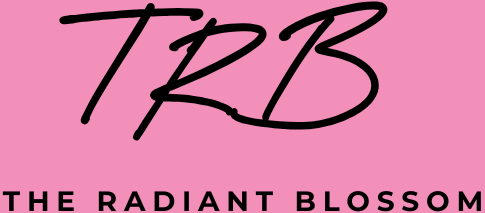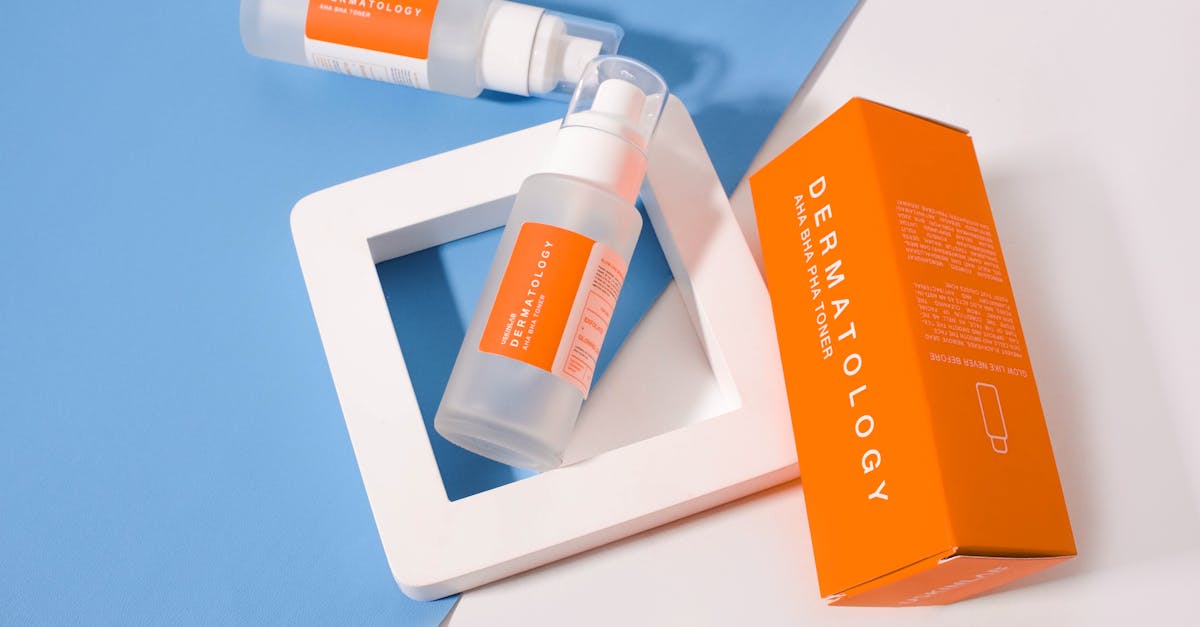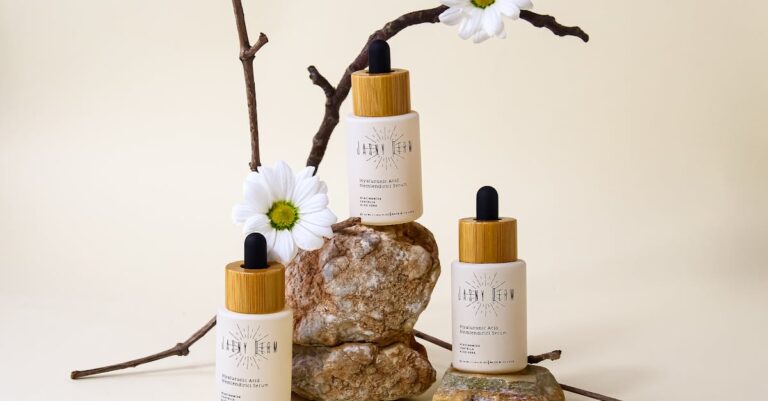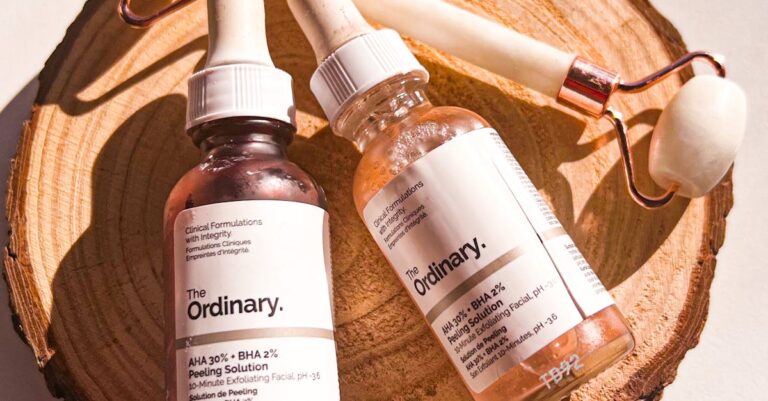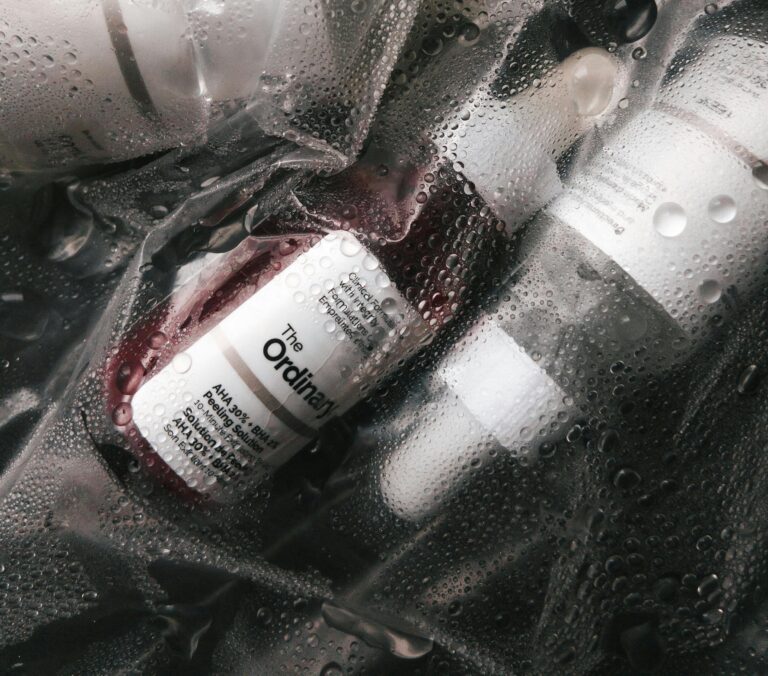If your skin has ever reacted badly to traditional exfoliants—redness, stinging, or that tight, uncomfortable feeling—you’re not alone. As skincare routines become more advanced, so does the demand for effective yet gentle ingredients. Enter PHAs (Polyhydroxy Acids)—the exfoliating acid that’s changing the game for sensitive skin and barrier-conscious beauty lovers.
Often overshadowed by their more aggressive cousins, AHAs and BHAs, PHAs offer a kinder, more hydrating approach to exfoliation. But don’t let the “gentle” label fool you—these acids still deliver serious results. From smoothing texture and brightening dull skin to supporting your moisture barrier and even fighting free radicals, PHAs pack a quiet punch that’s perfect for both skincare newbies and seasoned pros looking to treat their skin with a little more TLC.
In this comprehensive guide, we’re breaking down what PHAs are, how they compare to other exfoliants, who should use them, and how to work them into your routine for glowing, balanced skin—without the irritation.
What is PHA in Skincare?
PHA stands for Polyhydroxy Acid, a type of chemical exfoliant used in skincare to gently remove dead skin cells from the surface of the skin. PHAs are part of the same family as AHAs (Alpha Hydroxy Acids) and BHAs (Beta Hydroxy Acids), but they’re known for being much gentler and more hydrating—making them a favorite for sensitive or reactive skin types.
While AHAs and BHAs have smaller molecules that penetrate deeper into the skin, PHAs have a larger molecular size, which limits how deeply they can go. This results in a slower, more superficial exfoliation, minimizing irritation and stinging—common side effects for many people using traditional acids.
Common Types of PHAs:
- Gluconolactone – Most common PHA; hydrates, exfoliates, and provides antioxidant benefits.
- Lactobionic Acid – Derived from milk sugar; very moisturizing and soothing.
- Galactose – A sugar found in milk; promotes skin repair and collagen synthesis.
PHAs are unique in that they not only exfoliate, but they also attract moisture to the skin, making them both an exfoliant and a mild humectant. This dual function sets them apart from other acids that may leave the skin feeling dry or stripped.
How PHAs Work on the Skin
PHAs work primarily by breaking down the bonds between dead skin cells on the surface, allowing them to be shed more easily. This gentle exfoliation reveals smoother, brighter, and more even-toned skin underneath. But their effects go beyond basic exfoliation—let’s break it down:
1. Gentle Exfoliation
Thanks to their larger molecular structure, PHAs penetrate the skin more slowly and stay more superficial, reducing the risk of irritation, redness, or stinging. This makes them ideal for daily use or for individuals with sensitive or reactive skin.
2. Hydration Boost
PHAs are humectants, meaning they attract water to the skin. Gluconolactone and lactobionic acid, in particular, help lock in moisture, which is a huge bonus for dry or dehydrated skin types. Unlike some exfoliants that leave the skin feeling tight or stripped, PHAs often leave it feeling soft and supple.
3. Antioxidant Properties
Some PHAs (like gluconolactone) are also antioxidants, meaning they help neutralize free radicals caused by sun exposure, pollution, and other environmental stressors. This adds an extra layer of anti-aging and skin-protective benefits.
4. Supports Skin Barrier Function
Because they exfoliate gently and hydrate simultaneously, PHAs are much less likely to damage the skin barrier compared to harsher acids. In fact, they can help restore and reinforce the barrier over time, which is especially beneficial for those with eczema, rosacea, or damaged skin.
Benefits of PHAs
PHAs aren’t just a gentler alternative to AHAs and BHAs—they bring a unique set of benefits that make them incredibly versatile in a skincare routine. Here’s what they can do for your skin:
1. Gentle Exfoliation Without Irritation
One of the biggest benefits of PHAs is their ability to exfoliate without causing inflammation or stinging, which makes them perfect for:
- Sensitive skin
- Rosacea-prone skin
- Those new to acids
They slough off dead skin cells at the surface level, leaving your skin looking brighter and smoother—without the harsh side effects.
2. Hydration and Moisture Retention
PHAs have humectant properties, which means they pull moisture from the air into the skin. This makes them ideal for:
- Dry and dehydrated skin
- Winter skincare routines
- People using drying treatments (like retinoids or acne meds)
They hydrate as they exfoliate, which is something AHAs and BHAs can’t claim.
3. Antioxidant Protection
Some PHAs, especially gluconolactone, have built-in antioxidant powers. This helps fight free radicals caused by:
- UV rays
- Pollution
- Blue light exposure
That means PHAs not only make your skin look better—they also help protect it from premature aging.
4. Skin Barrier Support
Unlike harsher acids that can strip your skin, PHAs are barrier-friendly. They:
- Help maintain the skin’s lipid layer
- Minimize transepidermal water loss (TEWL)
- Are less likely to disrupt pH balance
This makes them suitable for people with compromised or sensitive skin conditions.
5. Suitable for All Skin Types
Because of their gentle, hydrating, and non-irritating nature, PHAs are often safe for:
- Sensitive skin
- Dry or mature skin
- Acne-prone skin (when paired with other actives)
Even pregnant and breastfeeding individuals (with doctor approval) can often use PHAs when AHAs or retinoids are off the table.
Potential Side Effects or Considerations
While PHAs are known for being ultra-gentle and generally well-tolerated, there are still a few things to keep in mind before diving in. Every skin is different, and even the mildest actives can cause reactions in certain individuals.
1. Mild Irritation (Though Rare)
Although uncommon, some people—especially those with extremely sensitive skin or compromised barriers—might still experience:
- Slight tingling or redness
- Dryness if overused
- Flaking (usually if layered with other actives)
➡️ Tip: Always patch test new PHA products before applying them all over your face.
2. Over-Exfoliation Risks
Just because PHAs are gentle doesn’t mean you can go wild with them. Using them too frequently, or combining them with other exfoliants like:
- AHAs (like glycolic or lactic acid)
- BHAs (like salicylic acid)
- Retinoids or tretinoin
…can lead to over-exfoliation, which may cause:
- Peeling
- Sensitivity
- Breakouts
- Barrier damage
➡️ Tip: Keep your routine balanced and listen to your skin—less is often more.
3. Sun Sensitivity (Still a Thing)
Even though PHAs don’t cause as much sun sensitivity as AHAs, any exfoliation can leave your skin more vulnerable to UV damage.
➡️ Tip: Daily SPF is non-negotiable—even on cloudy days or if you’re mostly indoors.
4. Not All PHAs Are Created Equal
Some formulations can be more potent than others, especially when:
- Combined with AHAs/BHAs in the same formula
- Delivered in high concentrations
- Packaged without moisturizing agents
➡️ Tip: Check the full ingredient list—look for hydrating companions like hyaluronic acid, ceramides, or panthenol.
Who Should Use PHAs?
PHAs are basically the introverts of the exfoliating acid world—low-key, non-irritating, and easy to get along with. They’re especially great for people who’ve had bad experiences with harsher acids, but they’re versatile enough for a wide range of skin types.
1. Sensitive Skin Types
If your skin tends to freak out with AHAs or BHAs (think: redness, stinging, burning), PHAs are a gentler alternative. Their large molecules don’t penetrate as deeply, which minimizes irritation.
2. Dry or Dehydrated Skin
Because PHAs are also humectants, they draw moisture into the skin, making them ideal for:
- Flaky or tight-feeling skin
- Skin that feels dry after cleansing
- People who live in cold, dry climates
3. Mature Skin
As skin ages, it becomes thinner and more prone to irritation. PHAs help:
- Gently smooth fine lines
- Hydrate
- Provide antioxidant support …without stressing the skin.
4. Rosacea or Eczema-Prone Skin
While every skin is different and patch testing is still key, many people with rosacea or eczema find PHAs to be the only exfoliating acids they can use without triggering flare-ups.
5. Pregnant or Breastfeeding Individuals
PHAs are often considered a safer alternative to stronger actives like retinoids or salicylic acid during pregnancy and breastfeeding—but always consult with a healthcare provider first.
6. Skincare Beginners
If you’re new to chemical exfoliants, PHAs are the perfect entry point. You can introduce your skin to the benefits of exfoliation without the drama.
PHA vs. AHA vs. BHA: What’s the Difference?
While all three are exfoliating acids, PHAs, AHAs, and BHAs each have their own vibe when it comes to how they work and who they’re best for. Here’s a side-by-side to clear up the confusion:
Quick Overview
| Feature | PHA | AHA | BHA |
| Name | Polyhydroxy Acid | Alpha Hydroxy Acid | Beta Hydroxy Acid |
| Solubility | Water-soluble | Water-soluble | Oil-soluble |
| Penetration | Shallow (large molecule) | Medium (smaller molecule) | Deep (into pores) |
| Strength | Mild | Moderate to strong | Moderate |
| Irritation Risk | Very low | Medium to high | Medium |
| Hydration | Yes (humectant) | Some (depends on type) | No (can be drying) |
| Antioxidant | Yes | Sometimes | No |
| Main Targets | Texture, hydration, sensitive skin | Dullness, texture, pigmentation | Acne, blackheads, oil control |
Use Case Highlights
- PHAs
- Best for: Sensitive, dry, or barrier-compromised skin
- Key ingredient examples: Gluconolactone, Lactobionic acid
- Extra perks: Hydrating + antioxidant
- AHAs
- Best for: Normal to dry skin with dullness, discoloration, or fine lines
- Key ingredient examples: Glycolic acid, Lactic acid, Mandelic acid
- Works well for: Skin brightening, anti-aging
- BHAs
- Best for: Oily or acne-prone skin
- Key ingredient: Salicylic acid
- Works well for: Unclogging pores, reducing breakouts, controlling oil
Can You Mix Them?
Yes, with caution. Some products blend these acids to create multi-benefit formulas, but layering them yourself can be too intense—especially if you have sensitive skin.
➡️ Tip: Stick to one acid type per routine unless a product is specifically formulated to combine them.
How to Incorporate PHAs Into Your Routine
Adding PHAs to your skincare routine is pretty straightforward—especially since they’re so gentle. Whether you’re a total newbie or just looking to switch up your exfoliant game, here’s how to do it right:
1. Start Slow, Even If They’re Gentle
Even though PHAs are mild, it’s still smart to ease them in. Begin with:
- 2–3 times a week, then work up to daily use if your skin tolerates it
- Nighttime is ideal, but some PHAs are gentle enough for morning use too
2. Apply After Cleansing
Here’s a sample order of application:
- Cleanser
- PHA toner, liquid, or serum
- (Optional) Hydrating mist or essence
- Moisturizer
- Sunscreen (if used in the morning)
3. Combine with the Right Ingredients
PHAs play well with others—especially hydrating and calming ingredients like:
- Hyaluronic acid
- Niacinamide
- Ceramides
- Panthenol (Vitamin B5)
- Centella asiatica
They’re also generally safe to use alongside retinol or other acids if your skin is used to those combos—but introduce slowly and watch for signs of over-exfoliation.
4. What Not to Mix (at First)
Until you know how your skin reacts, avoid combining PHAs with:
- Strong AHAs or BHAs (unless they’re in a formulated blend)
- High-strength retinoids
- Vitamin C (L-ascorbic acid) if your skin is very sensitive
5. Choose the Right Product Type for Your Needs
- Toner: Light daily use (e.g., The Inkey List PHA Toner)
- Serum: Targeted treatment, often combined with hydrators
- Mask: Occasional boost (1–2x a week)
- Moisturizer: Gentle, leave-on option (great for overnight)
➡️ Pro Tip: If you’re dealing with very dry or reactive skin, look for PHAs in moisturizers or cleansers rather than serums—this gives even softer delivery.
Best Practices for Using PHAs
Even though PHAs are some of the friendliest exfoliants out there, using them the right way ensures you get maximum benefits without accidentally irritating your skin. Here’s your cheat sheet for smart and safe use:
1. Always Use SPF During the Day
Even though PHAs are less likely to cause sun sensitivity than AHAs, any exfoliation can make your skin more vulnerable to UV damage.
➡️ Tip: Make daily sunscreen (SPF 30+) a non-negotiable if you’re using PHAs, especially in the morning.
2. Don’t Overdo It
More exfoliation ≠ better skin. Overuse can lead to:
- Redness
- Dry patches
- Increased sensitivity
➡️ Tip: If your skin starts feeling tight, shiny, or reactive, cut back and give your barrier time to recover.
3. Alternate With Stronger Actives
If you’re using retinoids, AHAs, or BHAs, alternate days or routines:
- Example: Retinol one night, PHAs the next
- Or use PHAs in the morning and other actives at night
This helps maintain balance and reduces the risk of irritation.
4. Pair With Moisture-Rich Products
PHAs already hydrate, but you’ll see even better results when combined with:
- Hydrating serums (like hyaluronic acid)
- Barrier-supporting creams
- Mists or essences for that juicy skin look
➡️ Think: Glow + Strength combo.
5. Listen to Your Skin
Everyone’s skin reacts differently—even to gentle acids. If your skin is:
- Burning, peeling, or breaking out more than usual
- Looking shiny in a tight or stretched way
- Becoming more reactive to other products
…it may be a sign you need to dial it back.
Popular Products Containing PHAs
Whether you’re a skincare minimalist or love a 10-step routine, there’s a PHA product out there to suit your vibe. Here’s a curated list of well-loved and effective PHA products across various categories:
Toners & Exfoliating Liquids
- The Inkey List PHA Toner
A budget-friendly option with 3% PHA—great for beginners and daily use. Hydrating, gentle, and no-frills. - Glow Recipe Watermelon Glow PHA + BHA Toner
A cult-fave with watermelon extract and cactus water. Offers mild exfoliation with a refreshing, hydrating finish. - Neostrata PHA Facial Toner
A dermatologist-loved formula from the brand that pioneered PHAs. Great for those who want serious skin-smoothing action without irritation.
Serums
- The Ordinary Gluconolactone 10% + Hyaluronic Acid (if/when available)
This long-anticipated product brings PHA and hydration together affordably. (Availability may vary—watch this space.) - Naturium PHA Topical Acid 12%
Combines PHAs with niacinamide for improved texture and pore appearance. A nice middle-ground strength for intermediate users. - Allies of Skin Mandelic Pigmentation Corrector Night Serum
A luxury serum with mandelic acid, PHAs, and brightening agents—perfect for hyperpigmentation and dullness.
Moisturizers
- Exuviance Ultra Restorative Crème
A rich, nourishing cream with PHAs, designed for sensitive and mature skin. Great for night use and barrier repair. - Paula’s Choice Omega+ Complex Moisturizer (contains PHA derivatives)
Deeply hydrating with a focus on strengthening the skin barrier. PHAs play a supporting role here.
Masks & Peels
- Dr. Dennis Gross Alpha Beta Ultra Gentle Peel
A two-step peel with a blend of PHAs and other mild acids. Designed for sensitive skin types who still want glow-up results. - The Ordinary PHA 3% + AHA 6% Peeling Solution (discontinued but was popular)
A once-trending product that showcased PHA in a higher-performance formula.
Final Thoughts and Tips
PHAs may not get the same hype as their stronger acid cousins, but don’t sleep on them—they’re a game-changer, especially for those who want results without the sting. Whether you’re dealing with dullness, dryness, or ultra-sensitive skin, PHAs offer a gentle, effective solution that works quietly but powerfully in the background.
Key Takeaways:
- PHAs = gentle chemical exfoliants that hydrate while smoothing and brightening the skin.
- Ideal for sensitive, dry, or compromised skin—and great for exfoliation beginners.
- Work gradually into your routine (2–3x a week) and always pair with SPF.
- They play well with hydrators and barrier-friendly ingredients, and can often be used alongside stronger actives (with care).
- Consistent use = smoother, more radiant skin over time—without the irritation drama.
Quick Tips for Success:
- Patch test, especially if you have reactive skin.
- Don’t mix too many acids at once unless a product is formulated that way.
- Hydrate, moisturize, and protect your skin barrier—especially when exfoliating.
- Keep expectations realistic: PHAs work gently and steadily, not overnight.
Whether you’re looking for a low-key glow-up or need a skin reset that won’t rock the boat, PHAs are one of skincare’s most underrated MVPs.
